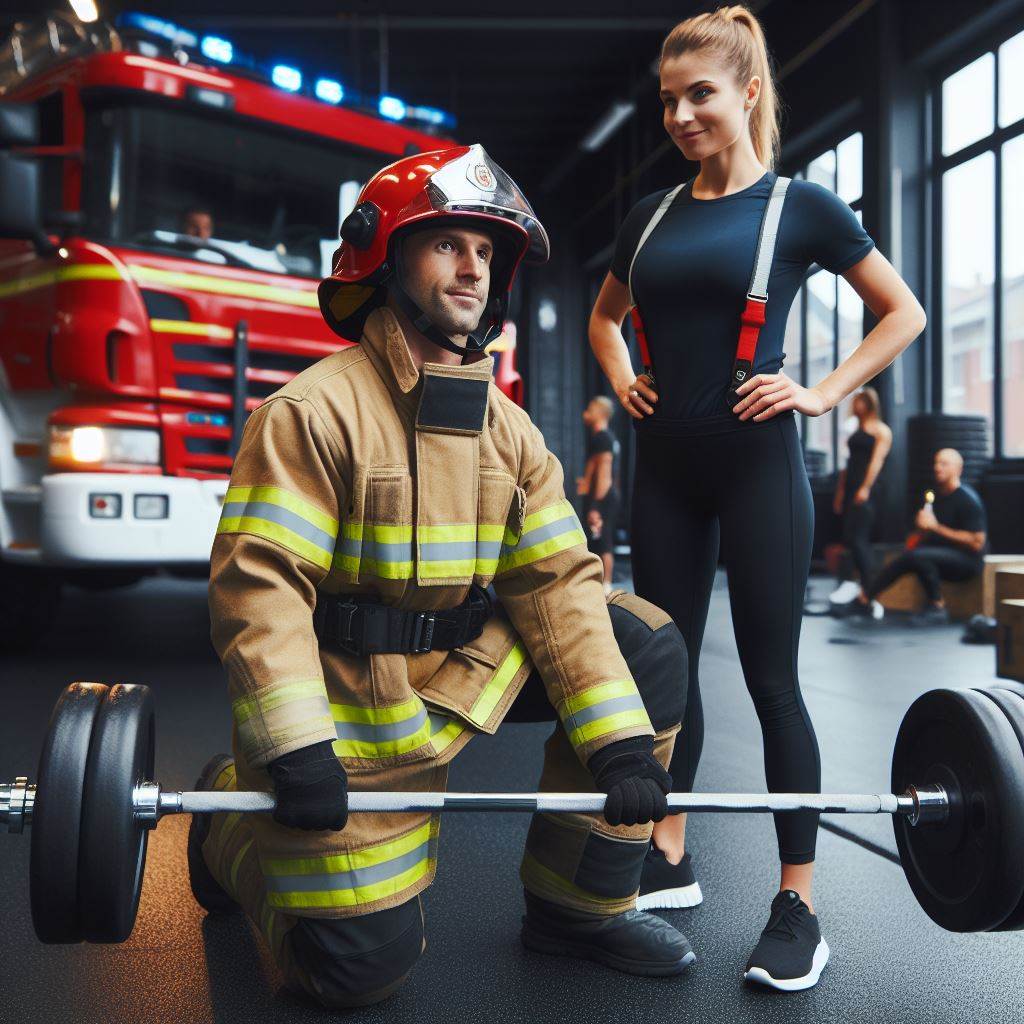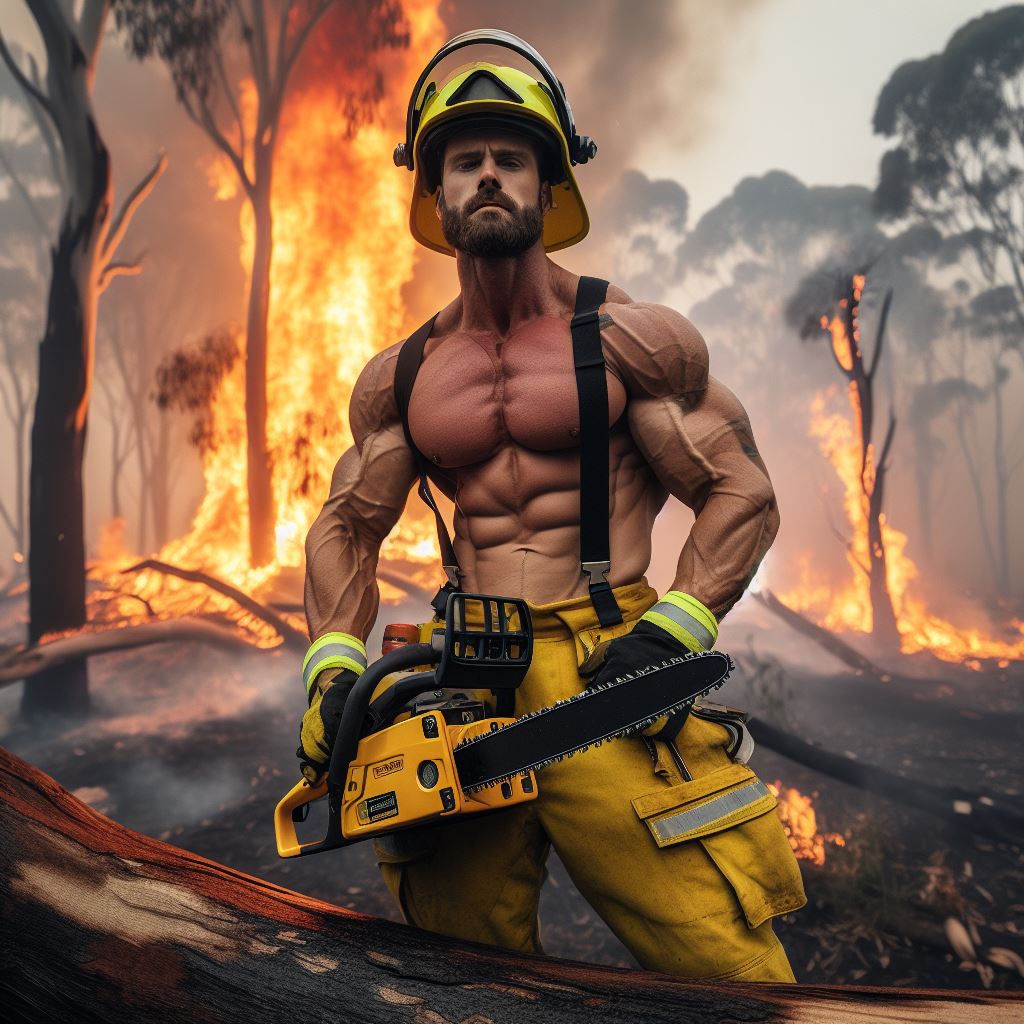Introduction
Firefighters put their lives on the line every day to save others and protect property. However, their heroic job comes with significant health risks. Exposure to smoke, toxic fumes, and high temperatures can have severe consequences on their wellbeing.
One of the primary risks faced by firefighters is the inhalation of toxic substances present in smoke. The combustion of materials releases harmful chemicals, such as carbon monoxide, hydrogen cyanide, and particulate matter.
Prolonged exposure to these substances can lead to respiratory problems, cardiovascular issues, and even cancer.
Additionally, firefighters are susceptible to thermal injuries. The intense heat generated during fires can cause severe burns and related complications.
Moreover, the physical exertion required during firefighting operations can put a tremendous strain on firefighters’ cardiovascular system, resulting in heart conditions and increased mortality rates.
To safeguard firefighters’ health, stringent measures have been implemented. Personal protective equipment (PPE), including self-contained breathing apparatuses (SCBA) and flame-resistant clothing, plays a vital role in minimizing exposure to harmful substances and reducing the risk of burns.
Regular medical examinations and health screenings help identify and address any health issues at an early stage.
Furthermore, comprehensive training programs aim to educate firefighters about potential health risks and provide them with the necessary knowledge and skills to mitigate these risks effectively.
Fire departments also emphasize the importance of a healthy lifestyle, including proper nutrition and physical fitness, to enhance firefighters’ overall wellbeing and resilience.
In review, firefighters face numerous health risks as a result of their demanding profession.
However, through the implementation of safeguards, such as PPE, training programs, and medical screenings, efforts are being made to protect their health and ensure their safety while they continue to carry out their noble duty of saving lives and protecting communities.
Read: Understanding Ranks in Australian Police Force
Health Risks Faced by Firefighters
Firefighters play a crucial role in society by protecting lives and properties from the devastating impact of fires. However, their heroic duties come with inherent health risks that often go unnoticed.
It is essential to recognize these risks and implement necessary safeguards to protect the well-being of these brave individuals.
Exposure to smoke and toxic chemicals
Effects of smoke inhalation on the respiratory system
Firefighters regularly inhale smoke, exposing their respiratory system to harmful substances. The toxic particles present in smoke can lead to acute and chronic respiratory issues, including asthma, bronchitis, and even lung cancer.
Health risks associated with exposure to toxic substances
Besides smoke, firefighters encounter a range of toxic substances during firefighting operations. These substances, such as asbestos, lead, and volatile organic compounds, pose severe health risks. Prolonged exposure can lead to organ damage, cancer, and neurological disorders.
Physical injuries and trauma
Risk of burns and other physical injuries
Firefighters are often exposed to extreme heat and flames, putting them at risk of severe burns. Additionally, collapsing structures, falling debris, and explosions can cause fractures, lacerations, and other physical injuries.
Emotional and mental toll of traumatic experiences
Firefighters frequently witness distressing scenes, including fatalities and life-threatening situations. Such experiences can take a toll on their mental and emotional well-being, leading to post-traumatic stress disorder, anxiety, and depression.
Long-term health consequences
Increased risk of cancer due to exposure to carcinogens
Firefighters have a higher risk of developing various types of cancer due to exposure to carcinogens present in smoke and chemical substances. This includes lung, bladder, skin, and gastrointestinal cancers.
Respiratory and cardiovascular diseases linked to firefighting profession
The inhalation of toxic fumes over a prolonged period puts firefighters at risk of respiratory diseases like chronic obstructive pulmonary disease (COPD) and interstitial lung disorders. Additionally, the physical demands of firefighting can contribute to cardiovascular diseases such as heart attacks and strokes.
Safeguards that prioritize firefighters’ well-being
To address these health risks faced by firefighters, it is essential to prioritize their well-being through various safeguards. These can include:
Your Personalized Career Strategy
Unlock your potential with tailored career consulting. Get clear, actionable steps designed for your success. Start now!
Get StartedProper training and education
Firefighters should receive comprehensive training on occupational hazards, protective gear usage, and safety protocols. This knowledge equips them to make informed decisions while minimizing exposure to smoke and toxic substances.
Adequate personal protective equipment (PPE) and firefighting gear
Providing firefighters with high-quality PPE, including respiratory masks, protective clothing, and gloves, is crucial in reducing their exposure to hazardous materials. Regular maintenance and proper fitting of gear is equally important to ensure optimal protection.
Regular health screenings and medical evaluations
Implementing routine health screenings can help identify early signs of respiratory disorders, cancers, and cardiovascular diseases. Timely detection allows for prompt interventions and better management of potential health issues.
Mental health support
Establishing psychological support programs and resources can help firefighters cope with the emotional and mental challenges arising from their profession.
Comprehensive mental health services, including counseling and peer support, can facilitate the healing process and reduce long-term psychological impacts.
Basically, firefighters face numerous health risks due to exposure to smoke, toxic chemicals, physical injuries, and trauma. It is vital to prioritize their health and well-being by implementing effective safeguards, including proper training, enhanced protective gear, regular screenings, and mental health support.
By acknowledging and addressing these risks, society can support these brave individuals who selflessly dedicate themselves to protecting others.
Read: Diplomatic Immunity: The Basics
Delve into the Subject: Police and Legal System in Australia
Learn More: Challenges Faced by Police Officers in Oz
Safeguards for Firefighters’ Health
Firefighters face numerous hazards while carrying out their duties, but there are several safeguards in place to protect their health and well-being.
This section will explore three key areas of safeguards: personal protective equipment (PPE), occupational safety regulations, and health and wellness programs.
Personal protective equipment (PPE)
- It is imperative for firefighters to have the appropriate gear to effectively combat fires and minimize health risks. PPE includes helmets, gloves, boots, and protective clothing.
- Different types of PPE are utilized to address specific hazards. For example, respiratory masks protect firefighters from inhalation of toxic fumes, while fire-resistant suits safeguard against burns and heat-related injuries.
Occupational safety regulations
- Firefighting organizations adhere to safety standards and guidelines to ensure the well-being of their personnel. These regulations cover various aspects such as equipment maintenance, emergency procedures, and hazard identification.
- Comprehensive training programs and protocols are implemented to prepare firefighters for various scenarios. These programs emphasize safety procedures, proper equipment usage, and effective communication during emergencies.
Health and wellness programs
- Fire departments prioritize the implementation of fitness and wellness initiatives to promote firefighters’ physical and mental health. Regular exercise regimes and nutrition plans are encouraged to maintain optimal fitness levels.
- The demanding nature of firefighting can have psychological impacts on firefighters. To address this, emotional support and counseling services are made available to help firefighters cope with stress, trauma, and other mental health issues.
Ultimately, safeguarding firefighters’ health is of utmost importance. Personal protective equipment, occupational safety regulations, and health and wellness programs play integral roles in ensuring their well-being.
By equipping firefighters with the right gear, adhering to safety regulations, and providing necessary support, we can better protect those who put their lives on the line to keep our communities safe.
Read: Crisis Management in Diplomacy

You Might Also Like: Firefighting: A Career of Courage in Oz
Role of Research and Technology
Research and technology play a vital role in ensuring the health and safety of firefighters.
Continuous efforts to study and understand the hazards associated with firefighting help in developing effective safeguards and preventive measures.
Additionally, advancements in monitoring systems and early detection methods aid in identifying and addressing health issues at an early stage.
Continuous research on firefighting hazards and health
Research on the long-term effects of smoke and chemical exposure is crucial to understanding the potential risks faced by firefighters. Such studies provide valuable insights into the health implications of prolonged exposure to hazardous substances.
By examining the data collected from these studies, policymakers and fire departments can implement more efficient safety protocols.
Stand Out with a Resume That Gets Results
Your career is worth more than a generic template. Let us craft a resume and cover letter that showcase your unique strengths and help you secure that dream job.
Get HiredFurthermore, continuous research also leads to innovations in firefighting equipment and techniques. Advancements in technology and materials enable the development of gear that offers better protection against the various hazards encountered during firefighting operations.
New equipment and techniques not only enhance the safety of firefighters but also improve their efficiency in responding to emergencies.
Advances in monitoring and early detection
To ensure the well-being of firefighters, the development of improved monitoring systems is essential. These systems allow for real-time tracking of firefighters’ health parameters, including heart rate, body temperature, and exposure to toxic gases.
By continuously monitoring these vitals, any deviations from normal levels can be detected promptly, enabling immediate intervention and prevention of potential health issues.
Early detection of health issues is also facilitated by regular check-ups and screenings specifically tailored for firefighters. Routine medical examinations and screenings help in identifying any underlying health conditions or abnormalities that may have developed as a result of the demanding nature of their job.
Detecting issues early allows for timely treatment and better management of these health concerns.
In a nutshell, research and technology play a fundamental role in mitigating the health risks faced by firefighters. Continuous research on firefighting hazards and health not only increases our understanding of the potential risks but also leads to innovations in equipment and techniques.
Furthermore, advances in monitoring systems and early detection methods ensure timely identification and management of health issues. By investing in research and technology, we can enhance the overall safety and well-being of firefighters, who selflessly put their lives on the line to protect others.
Read: Day in the Life of an Aussie Police Officer
Delve into the Subject: Climbing the Ladder: Political Careers in Australia
Conclusion
As we conclude this exploration into the intricate web of health risks faced by firefighters, the urgency to fortify their well-being becomes even more apparent.
Delving into the perilous battlegrounds, where these brave individuals confront not only flames but also unseen adversaries in the form of toxins, underlines the critical need for comprehensive safeguards.
Recapping the multifaceted challenges – both physical and mental – serves as a stark reminder that firefighting extends beyond the immediate emergencies. It is a continuous battle that leaves lasting imprints on those who valiantly stand on the frontline.
This section is not merely a summary; it’s a call to action. A rallying cry echoing through the corridors of communities, resonating in the chambers of policymakers, and reverberating within the precincts of institutions.
Safeguarding the guardians of our safety is not just a protocol; it’s a collective responsibility, a commitment to prioritizing the sanctity of those who selflessly protect us.
This is not the end; it’s a beginning. An invitation for all of us to elevate firefighter health to the zenith of our shared priorities, ensuring that our modern heroes not only battle the flames but emerge from the ashes with resilience, strength, and robust well-being.




